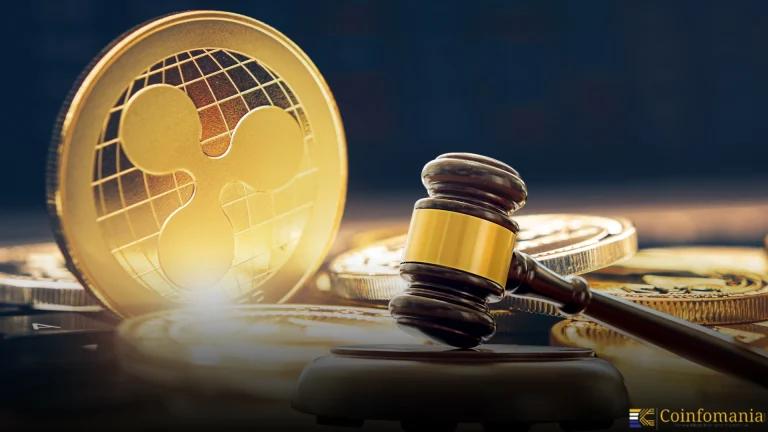Cryptocurrency Regulations in Turkmenistan
Turkmenistan is preparing to revolutionize its digital asset sector with the draft “On Virtual Assets” law under consideration by its president. This way, it seeks to legitimize the status of cryptocurrencies through the regulation of their mining, trading, and fintech services. These aspects will be transferred from an unregulated state to a structured framework that […]

Turkmenistan is preparing to revolutionize its digital asset sector with the draft “On Virtual Assets” law under consideration by its president. This way, it seeks to legitimize the status of cryptocurrencies through the regulation of their mining, trading, and fintech services. These aspects will be transferred from an unregulated state to a structured framework that is afforded the growing sanctity configured on the grounds.
With the crypto market expected to yield revenues of $2.7 million in 2025, there will be foreign direct investment in the country while still allowing some level of government control. This is likely to position Turkmenistan as the next blockchain hub in Central Asia. It is also the blueprint of the country in diversifying its energy-dependent economy through the regulation of digital assets. Success will depend on overcoming obstacles such as banking integration and infrastructure development, which might take a leaf from Kazakhstan’s book regarding balanced regulations on cryptocurrency.
Historical Context
Turkmenistan’s approach to digital assets has evolved significantly in recent years:
- Before 2023, Cryptocurrencies existed in a gray area and no regulatory framework was formed for them.
- Early 2025: The draft of the bill “On Virtual Assets”, limited to describing the legal status of what is called crypto, is in place.
- Mid 2025: The proposal entered the process of parliamentary scrutiny, which predicted a possible legalization by the end of 2025 or 2026.
This development reflects that Turkmenistan is slowly coming out of the shell of regulatory absence towards instituting governance mechanisms for the new digital space concerned with assets. These developments are reflective of the trends across the globe in terms of regulations on cryptocurrencies.
Regulatory Framework
Legal Status of Cryptocurrencies
- The draft law is under consideration by parliament while legalizing virtual assets under state supervision.
- Foreign currency restrictions may apply (for example, the purchase of crypto was historically required to be in USD).
Key Provisions of the Draft Law
- Mining: Legalization and licensing of crypto mining operations.
- Token Issuance: Rules for public offerings and asset issuance.
- VASP Licensing: Requirements for exchanges and custody services.Government
Oversight & Enforcement
- The Central Bank of Turkmenistan will likely oversee compliance.
- AML/CFT measures are expected to align with international standards.
Turkmenistan’s Crypto Policies
Mining Regulations
The draft law from Turkmenistan specifies that a licensed mining framework needs to require the granting of prior government approval. So it can carry out activities in any mining land in the country while addressing energy consumption. Policies are mostly suitable for large-scale miners, giving a chance for state-created joint ventures based on the energy resources of Turkmenistan.
Virtual Asset Service Providers (VASPs)
The law mandates local registration for crypto exchanges and custodians, subject to strict oversight. Foreign platforms must establish Turkmen entities or partnerships to operate legally, aligning with the government’s controlled fintech expansion strategy.
Key Implications:
- State-controlled crypto economy: Licensing ensures government oversight.
- Energy advantage: Cheap electricity could attract miners.
- Barriers to entry: Compliance costs may limit smaller players.
Turkmenistan’s Approach to Crypto Innovation
The most recent development from Turkmenistan would be that state-driven action within the framework of crypto innovations is being considered. The priority is now directed towards blockchain in the government’s public service applications. In the case of the number of central banks planning to build a central bank digital currency (CBDC), Turkmenistan does not have plans towards such but works on building up infrastructure for the regulated digital assets ecosystem.
However, the virtual assets law was meant to contain elements that would set the stage for developing local crypto entrepreneurship and build confidence to attract blockchain startups, thus sending signals that these measures would serve by lending themselves toward the balanced strategic intent of developing a digital economy within controlled but innovative environments. With this balanced approach, Turkmenistan’s cautious financial technology entry is combined with robust government control.
Notable Challenges and Issues
Turkmenistan is facing several serious challenges when it comes to regulating cryptocurrencies, which will matter in the ease of implementation and adoption:
- Regulatory delays: Uncertain timeline for the approval of the legislation.
- Banking limitations: Limited fiat on/off ramps for cryptocurrency transactions.
- Energy costs: Mining profitability is dependent on subsidized electricity.
- Low public awareness: Crypto adoption is nascent among citizens.
These challenges accentuate the intricacies involved in creating a viable digital asset ecosystem in Turkmenistan’s real economic and political environment. At least symbolically, this draft law represents some step forward for the real economy, but all of these impediments to crypto implementation may become even more difficult with the process of formal legalization.
Key Regulatory Trends and Future Outlook
Turkmenistan’s cryptocurrency landscape is headed for transformation, with several critical developments on the horizon:
- Law enactment expected (2025–2026): Parliamentary approval could formalize crypto use.
- Strict VASP rules: Exchanges may face high compliance burdens.
- Regional influence: Could follow UAE/Kazakhstan’s regulated crypto models.
- Economic diversification: Crypto mining may become a state revenue source.
Long-Term Implications
While the regulatory direction appears progressive, implementation will determine whether Turkmenistan becomes:
- A tightly controlled digital asset market serving state interests
- A competitive regional player in blockchain innovation
- A cautionary tale of over-regulated stagnation
The coming 12-18 months will be crucial in shaping which path dominates.
Conclusion
Turkmenistan’s draft crypto law marks a pivotal step toward regulated digital asset adoption. While there are still challenges, this balanced framework of regulations can position it as the next country in Central Asia to have a blockchain hub. Successful implementation may unlock the growth potential of the sector, which is currently pegged at a market valuation of $2.7 million, beyond blending innovation with financial oversight.
FAQs
1. Are cryptocurrencies legal in Turkmenistan?
While the draft law ‘On the Virtual Assets’ might serve to eventually legalize such instruments, currently, cryptocurrencies fall within a grey area of regulation. The government will eventually draft regulations for digital assets on which it is currently working.
2. What suggestions does the draft law have concerning cryptocurrencies?
The law will allocate powers for financing, trading, and other fintech services under the auspices of the government. Thus, licensing regimes will be provided for even exchanges and miners.
3. Can foreigners invest in Turkmen crypto projects?
Foreign investment may be permitted under the new law, but with potential restrictions. The government seeks to attract capital while maintaining control.
4. Will crypto mining be allowed?
Mining may become legal, but require licenses and compliance with energy-use rules. Large-scale operations could partner with state entities.
5. Are crypto exchanges operating in Turkmenistan?
Currently, no licensed exchanges exist, but the law may authorize regulated platforms. Foreign exchanges may need local registration.
6. How will taxation on crypto work?
The tax rules remain uncertain, although capital gains tax or transaction tax may be levied through the respective law. Clarity on this is expected after parliamentary approval.
7. Does Turkmenistan plan a CBDC?
No official plans exist, but the government is prioritizing digital asset infrastructure. A state-backed digital currency remains possible long-term.
8. What challenges does regulation face?
Banking restrictions, energy costs, and slow adoption may hinder implementation. Regulatory delays could push full legalization to 2026.
9. How does Turkmenistan compare to its neighbors?
It may follow Kazakhstan’s regulated mining model but with stricter oversight. Regional trends could influence final policies.
10. What’s the future of crypto in Turkmenistan?
If the law passes, regulated growth is likely, focusing on mining and institutional use. Retail adoption may remain limited initially.
Follow us on Google News
Get the latest crypto insights and updates.
Related Posts

Ripple Highlights Custody as Key to $18.9T Tokenized Assets by 2033
Shweta Chakrawarty
Author

Hong Kong SFC Issues New Custody Rules for Crypto Platforms
Shweta Chakrawarty
Author

South Korea and Vietnam eye $150B trade despite Trump tariff
Shweta Chakrawarty
Author